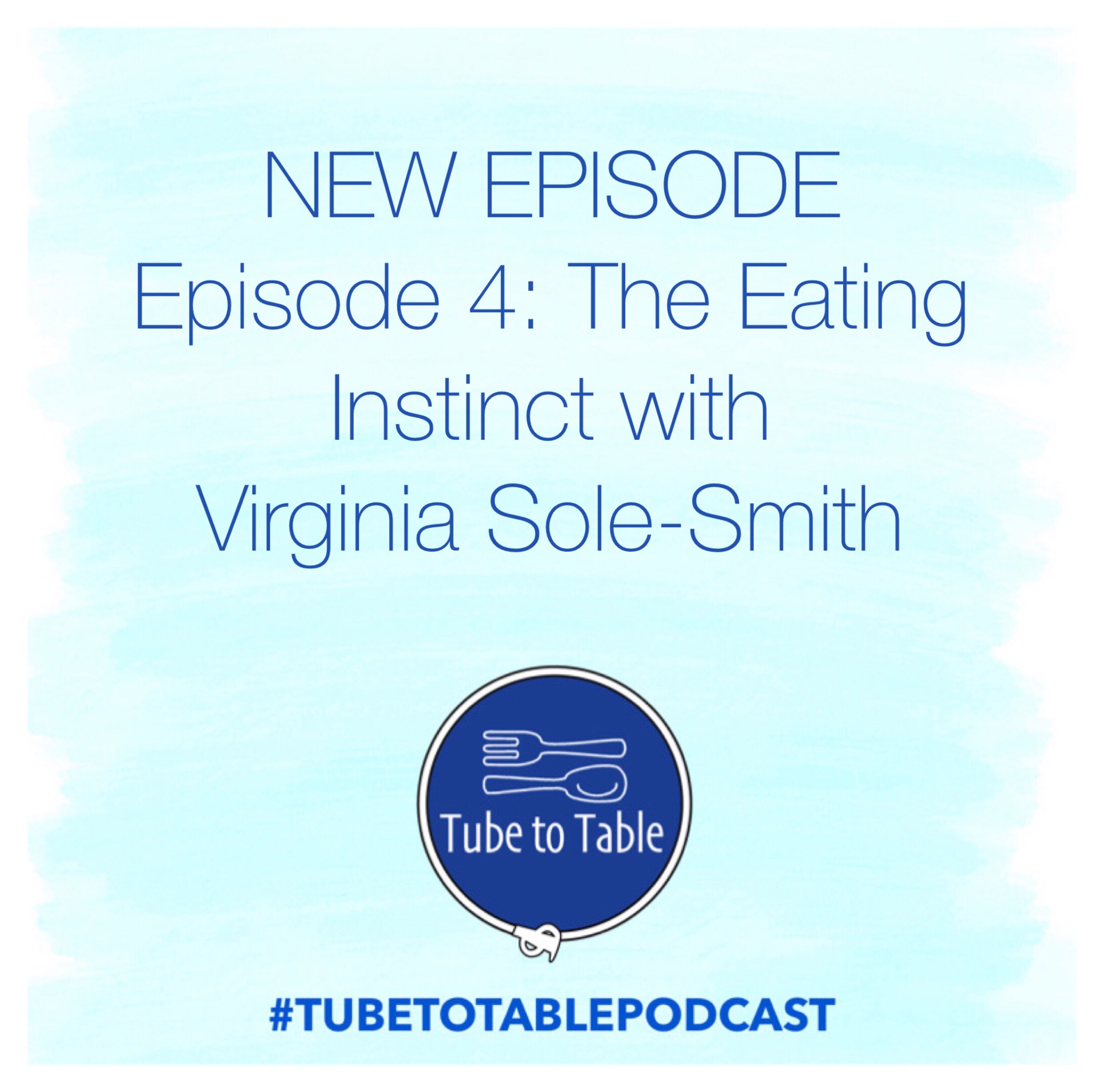Tube To Table Podcast: Episode 4: The Eating Instinct with Virginia Sole-Smith
April 29, 2019
Posted in: Early Intervention, Feeding, Feeding Tube Weaning, Tube To Table Podcast
In this week’s episode of the Tube To Table Podcast, Jennifer and Heidi sat down with Virginia Sole-Smith to discuss her child’s journey from
You can download this episode from Itunes, Stitcher, Spotify, Google Play, or listen to it below:
Virginia is a journalist who writes about health and our relationship with food and our bodies. At the start of her career, Virginia wrote a lot for women’s magazines about rule-based, diet stories. Although something about this didn’t feel “right”, it wasn’t until she had her first daughter, Violet, when she made the decision that this focus was not what she wanted to do. Violet was born with a rare set of congenital heart defects and around 4 weeks old, she had to have emergency cardiac surgery to save her life. At this time, she felt nobody could prepare them for the fact that all of these medical complications meant Violet would stop eating.
We asked Virginia, if you could go back to yourselves in time, what would you like to tell yourselves during that time? Her answer..
“It is a long road, but there is hope. Trust yourself, even if you don’t have the answers in the beginning. It’s not your fault..or your child’s”
Violet had an extensive hospital stay following this surgery, and the medical team shared that she would need more surgeries in the future. At 4 weeks old, Violet had just been through a scary, traumatic experience and although it was all necessary and live-saving, it was terrifying. She started to shut down about anything going in her mouth, and although breast feeding was attempted in the hospital once she was stable, she refused and became very upset. At this time, the idea that the feeding tube would be temporary went away. The feeding tube was necessary at the time to help her gain strength, and needed to save her life. Virginia shares more about how she learned what a feeding tube was, why it was necessary, and the information she received about it’s future with her family in the episode!
Before discharge from the hospital, Virginia and her husband were trained on how to use the pump, how to check the placement of the NG tube, and how to keep Violet safe. There was no information given or a discussion on how hard it would be having a child with a feeding tube, and the impact of not being able to feed your child. Virginia received all the appropriate medical information from her medical team, but she felt that nobody was fighting to transition Violet to becoming an oral eater. Violet eventually transitioned to a G-tube, which at the time, was the best decision. Violet’s therapy team was working on decreasing her oral aversion through a responsive feeding approach. The therapist worked with Violet’s family to explain why Violet was afraid of food and what this meant going forward.
While working through the trauma Violet experienced and using a responsive feeding therapy approach, Virginia started to research what tube weaning options were out there and what they looked like. She was having a difficult time working with her medical team because there was such a focus on the numbers and the medical aspect, rather than looking at how Violet was responding to responsive therapy and the progress she was making.
As a perk of being a journalist, Virginia started to research and observe multiple different feeding weaning approaches in different areas. She found that the behavioral model was all about external motivations. Having come from her background writing diet articles, this felt all too familiar about teaching children to not listen to their bodies, but to external cues. Read more about why behavioral feeding therapy can harm your child’s relationship with food in our recent blog post here! Virginia observed Thrive by Spectrum Pediatrics Tube Weaning Program and observed that therapy has to be gentle, and responsive to the child.
After this research, Virginia was featured in the New York Times Magazine for her article, “When Your Baby Won’t Eat”.
Violet started to eat foods with her family, travel on family vacations without worrying about the feeding tube, and eating grilled cheese! Violet now loves food and currently LOVES chocolate ice cream with sprinkles!

Be the first to comment